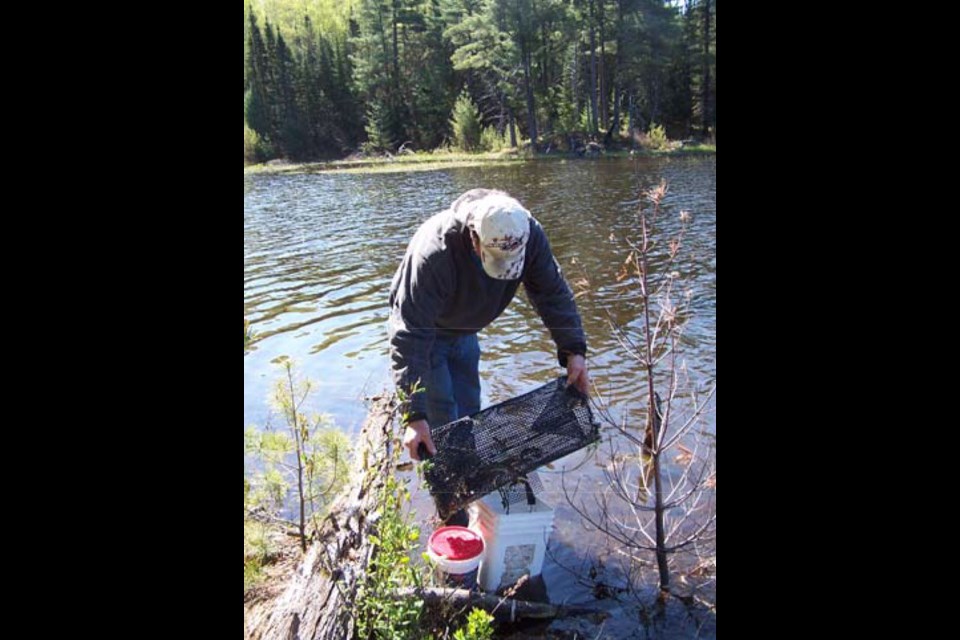THUNDER BAY — The Ministry of Natural Resources and Forestry is moving to restrict the transportation of baitfish from one region of Ontario to another.
But its original plan, which encountered some opposition during consultation stages, has been revised to reflect concerns raised by anglers and baitfish operators.
In Thunder Bay, representatives of both groups say they are generally pleased with the changes.
The ministry's bait management strategy is aimed at reducing the threat of invasive species and fish diseases spreading around the province.
MNRF initially proposed to establish four bait management zones in northern Ontario, and to prevent anglers from moving bait between the zones.
Under the new draft, there would be only two zones across the north and two in southern Ontario.
The strategy proposes the following:
- movement of both purchased and personally-harvested baitfish and leeches is limited to four bait management zones
- anglers can personally-harvest and move their bait within the zone of their primary residence without additional documentation
- anglers who use bait outside of the bait management zone of their primary residence would be required to purchase their bait in the zone where they are fishing. They would be required to keep a receipt on hand to show proof of purchase location. The proof of purchase would remain valid for two weeks. Anglers who fish and use bait in their home zone do not need a receipt
- the list of eligible baitfish species is reduced to only those 34 species that anglers and commercial operators typically use and sell
- the use and storage of bait is prohibited in native brook trout lakes
- no changes to the use and harvest of bait in provincial parks
- minor changes will be made to commercial bait licences (e.g. to provide longer licence terms, to work with the industry to develop a compliance framework)
The executive-director of the Northwestern Ontario Sportsmen's Alliance, John Kaplanis, says he's happy the ministry listened to concerns that were expressed at a meeting in Thunder Bay last fall.
"The geographic sections that they had planned were smaller, and there were far more of them....Tourism outfitters in the far north wouldn't have been able to buy bait in Atikokan or Thunder Bay, for example, and then fly it up north to their outpost camps where their clientele are," Kaplanis told Tbnewswatch.
At the consultation meeting, he had warned that the original plan "would have put bait fishermen and the bait industry at risk in the north...it would have put a lot of people out of business."
A Thunder Bay baitshop operator who participated in the meeting echoed that concern at the time.
"They want to limit the zones of where we can and can't trap our minnows, who we can and can't buy from in the different areas. If that regulation goes through, it's gonna limit where we can buy from," said Christine Lindsey Hewitson of Blackfoot Baits.
Hewitson suggested the new restrictions could even lead to a shortage of minnows to sell in Thunder Bay, forcing some operators to close down for the winter.
The revised scheme, she told Tbnewswatch Tuesday, is a big improvement.
"It keeps us being able to import from where we need to."
Hewitson is concerned, however, that although commercial bait operators will be required to take an MNRF-administered training course to identify invasive species and species at risk, members of the public who trap their own minnows will be exempt.
She said most bait harvesters and sellers are already educated about the issue, and "it's a good idea" to make that education mandatory.
"The personally harvested bait is where a lot of the invasive species is still going to be a risk, because the general public doesn't know the invasive species, or the different kinds of minnows that are available. So the risk of moving invasive species across waterways is still going to be there," Hewitson said.
She added that harvesters and dealers worki hard to watch for invasive species, and keep detailed records to help prevent their spread, "but if the general public doesn't have to abide by those same rules, it's kind of a Catch-22."
Kaplanis, however, believes anglers who prefer to trap their own bait faced too much red tape under the ministry's original plan.
"There were inclusions in the previous proposal that you would have to keep a logbook, and record where and how many baitfish you trapped...A lot of things didn't make sense to us," he said.
The draft is posted on the Ontario Environmental Registry for public feedback until Nov. 14.
"We heard directly from bait operators and anglers at listening sessions across the province," said a government news release Monday. "The draft strategy addresses the movement of bait, which is a key factor in minimizing ecological risk, while providing flexibility to industry and anglers."
